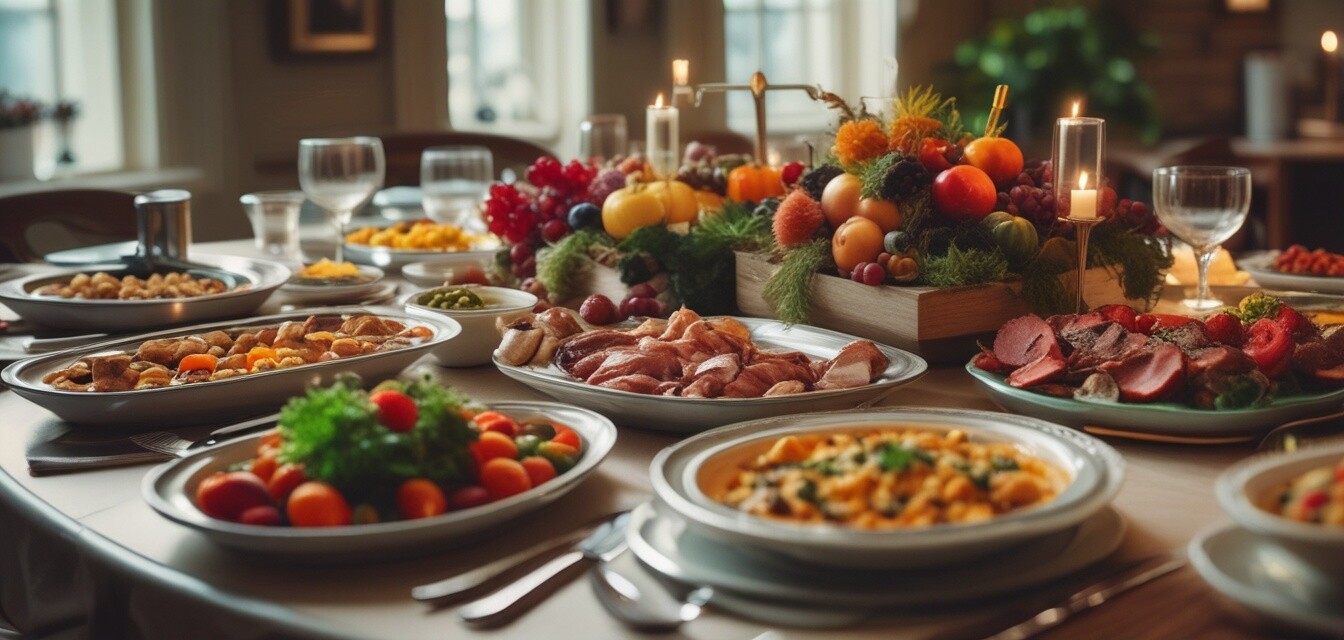
Disclosure: The FTC requires that this article indicate that it was created using AI and is not based on personal experience. It includes affiliate links, which means we may earn a commission if you purchase through these links at no extra cost to you. As Amazon Associates, we earn from qualifying purchases. Product recommendations and endorsements were generated by AI and do not reflect personal opinions or real-world use.
Portion Control for Large Gatherings
- Understanding portion sizes is crucial for minimizing food waste.
- Strategies like using measuring tools can help ensure accurate portions.
- Food presentation contributes to an enjoyable dining experience.
- Planning and preparing in advance allows for smoother execution.
- Consider dietary restrictions and preferences of your guests.
When hosting a gathering, one of the biggest challenges can be figuring out how much food to prepare. Portion control plays a significant role in ensuring that everyone is satisfied while minimizing waste. In this article, we will explore best practices for portion control when cooking for groups, covering everything from estimating serving sizes to employing effective strategies that streamline the cooking process.
Understanding portion sizes
When it comes to portion control, understanding standard serving sizes is essential. This not only helps in saving food but also managing costs effectively. Here, we outline some average portion sizes based on common food categories:
| Food Type | Recommended Portion Size |
|---|---|
| Proteins (Meat, Fish) | 4-6 oz per person |
| Vegetables | 1-1.5 cups per person |
| Grains (Rice, Pasta) | 1/2-1 cup per person |
| Desserts | 1 piece/slice per person |
Utilizing measuring tools
To avoid over or under-preparation, utilizing measuring tools is highly effective. Here are some common tools to consider:
- Measuring cups: Perfect for portioning out liquids and grains.
- Food scales: Excellent for weighing proteins to ensure accuracy.
- Scoops: Ideal for serving out uniform portions of sides or desserts.
Strategies for effective portion control
Incorporating effective strategies can greatly enhance your portion control. Here are some tips to implement:
- Plan your menu in advance: This allows for mindful preparation and budgeting. Check our section on buying guides for more tips.
- Prepare a tasting menu: By offering small portions of various dishes, guests can enjoy a variety without overindulging.
- Use smaller plates: Encouraging guests to use smaller plates can lead to lesser food waste.
- Ask for input on preferences: Consider dietary restrictions and preferences, as this can influence how much you prepare.
Food presentation matters
The way food is presented can influence your guests' perceptions of portion sizes. Here are some ideas to enhance food presentation:
- Use decorative serving dishes to enhance visual appeal.
- Garnish with fresh herbs or edible flowers to make meals more inviting.
- Consider the layout of the buffet—ensure it flows well to avoid crowding.
Conducting a potluck gathering
Having guests bring a dish contributes to variety and can ease the pressure on your portion control efforts. Here are some essential tips for a successful potluck:
- Set a theme for the potluck to guide your guests' contributions.
- Request that they label their dishes with ingredients and portion sizes.
- Establish a sign-up sheet to avoid duplicates and coordinate preparations.
For more ideas on food storage and what containers to use, visit our Food Storage Solutions page.
Overcoming common challenges
Despite careful planning, you might encounter certain challenges regarding portion control. Here are some common obstacles and ways to overcome them:
- Guests having large appetites: Always cook extra! It’s better to have leftovers than running out of food.
- Unexpected guest count: Keep some easy, quick-preparo items on hand, such as bread or snacks.
- Diverse dietary needs: Create a few vegetarian or gluten-free options to ensure everyone feels included.
Pros
- Reduces food wastage
- Cost-effective planning
- Ensures guest satisfaction
Cons
- May require more time in upfront planning
- Risk of running out of food if miscalculated
Key takeaways for portion control
By understanding portion sizes, utilizing measuring tools, and applying effective strategies for food presentation, you can master the art of portion control for large gatherings. Remember, best practices can elevate your cooking experience and ensure all guests leave satisfied.
Conclusion
Portion control isn’t merely about avoiding waste; it’s about respecting resources, enhancing guest experiences, and ensuring everyone enjoys their meal. Achieving this balance takes practice, but with these tips, you're well on your way to hosting successful gatherings.